One year ago, in the middle of winter, a series of devastating earthquakes hit both southern Türkiye and northern Syria, killing over 59 000 people — over 53 500 in Türkiye and 5900 in Syria. Tens of thousands more people were injured and thousands of homes and public buildings, including hospitals, were damaged or destroyed. This was one of the biggest disasters in the region in recent times.
The earthquakes required a massive health response. Despite the disruption to health services due to damaged infrastructure and transportation, health workers and volunteers worked day and night, providing first aid, wound and surgical care to people suffering from spinal cord injuries, loss of limbs, traumatic brain injuries, and bone fractures.
In Türkiye, the national authorities coordinated a large number of medical evacuations and established field hospitals in the affected areas to provide care for the injured.
In Syria, the earthquakes hit communities that had already been deeply affected during the 13-year long conflict-driven crisis, characterized by repeated displacement, disease outbreaks and a severely weakened health system. Increasing tensions within the country and the region continue to exacerbate the already precarious health situation of nearly 15 million people in need of health services across the country.
Survivors struggled to get access to basic health services for the treatment of chronic conditions, as well as maternal, newborn and child health care. Mental health needs triggered by the initial event were heightened by thousands of aftershocks coupled with poor living conditions, in overcrowded shelters, where protection concerns and the risk of disease spread became higher. Damaged water networks and at least 125 health facilities, and untold numbers of medical equipment and devices, further disrupted access to basic services for affected populations in Syria. Heavy snow, rainfall and power cuts hampered humanitarian access while the lack of communications and fuel aggravated the situation.
In the first days after the earthquakes, WHO mobilized support to life-saving trauma care for hundreds of casualties. WHO supported both Türkiye and Syria by delivering health supplies, sending experts for technical support, jointly coordinating the deployment of Emergency Medical Teams (EMTs) to affected parts of Türkiye, supporting mobile health teams who provided health care services to affected populations in Syria, re-establishing and strengthening disease surveillance and outbreak response, and addressing mental health and psychosocial needs of the affected populations.
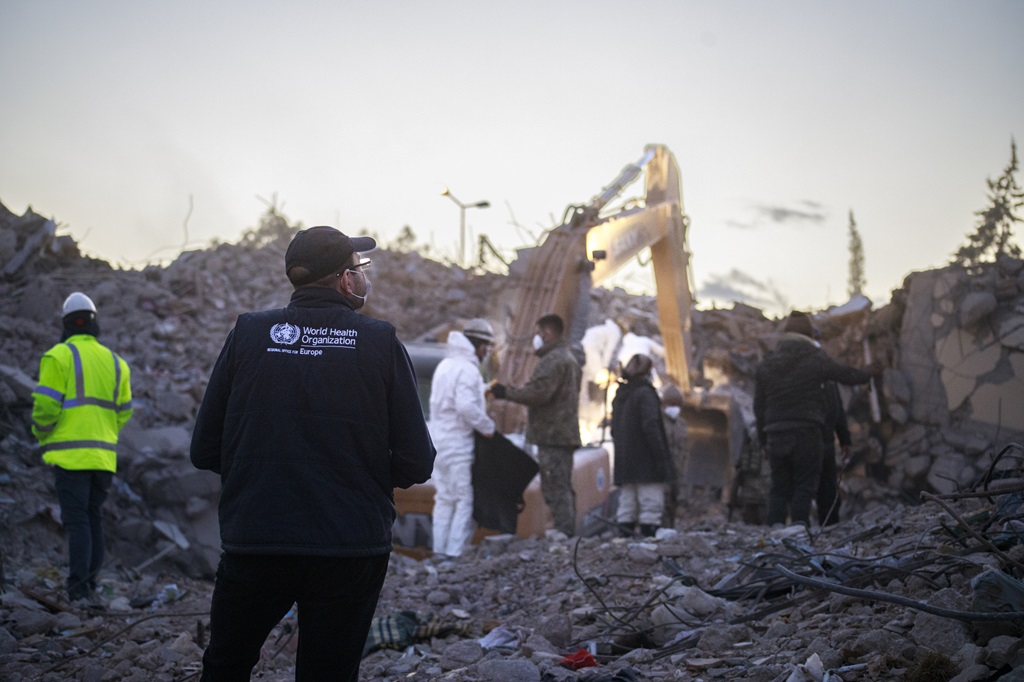
Teams from WHO, deployed in the provinces highly affected by the earthquake, gather information for a rapid field assessment. Hatay, Türkiye. Credit: WHO / Tunc Ozceber
A few days after the earthquakes struck, WHO Director-General, Dr Tedros Adhanom Ghebreyesus, accompanied by the WHO Executive Director for Emergencies, the WHO Regional Director for the Eastern Mediterranean Region and the WHO Representative in the country, visited the affected areas in Aleppo. Dr. Tedros then proceeded to visit north-west Syria, the location of the greatest unmet health needs following the earthquake, becoming the first UN principal to enter north-west Syria since the beginning of the conflict, 13 years ago. During these visits, WHO delegations met with senior and local officials leading the response, health partners, communities, health and frontline workers, victims, and families. A few weeks later, WHO Director-General and the WHO Regional Director for the European Region also traveled to the affected areas of Türkiye, where they met communities, frontline workers and government representatives leading the response.
The consequences of this large-scale disaster will last for many years to come, and the health needs of earthquake survivors remain high. Many people continue to live in temporary shelters, dealing with loss and mental health trauma. Those living with disabilities caused by the earthquakes continue to need rehabilitation care. In Türkiye alone, many thousands of people are estimated to have long-term rehabilitation needs. In Syria, the physical and psychological damage is still affecting millions of people. Nearly one year later, levels of depression and stress-related disorders have increased by 200% and 600% respectively compared to previous years across Syria.
Today, WHO and health partners continue to deliver health services for maternal and child health, management of non-communicable diseases, prevention of outbreaks of cholera and other infectious diseases, physical rehabilitation, and mental health and psychosocial support. WHO is also focused on health system recovery, including replacement of damaged equipment and devices, repair of affected health facilities, and promotion of integrated disease surveillance. Both in the immediate and longer-term following disasters of this scale, disease prevention and control is critical and WHO efforts have included the control of infectious diseases and prevention of water-borne infections.
Here are 6 ways that WHO has responded to the immediate and continuing health needs of the populations affected by the earthquakes in both Türkiye and Syria:
1. Over 6 million people were reached with emergency medical supplies for wound and trauma care in both countries. The initial response within Syria also included the procurement of medicines for trauma and surgery, non-communicable diseases, antibiotics, intravenous fluids and other important supplies with timely airlift provided by the WHO Logistics Hub in Dubai and subsequent dispatch of materials to public health facilities in affected areas. In north-west Syria alone, 252 metric tons of supplies were delivered through 25 cross-border deliveries from Türkiye.
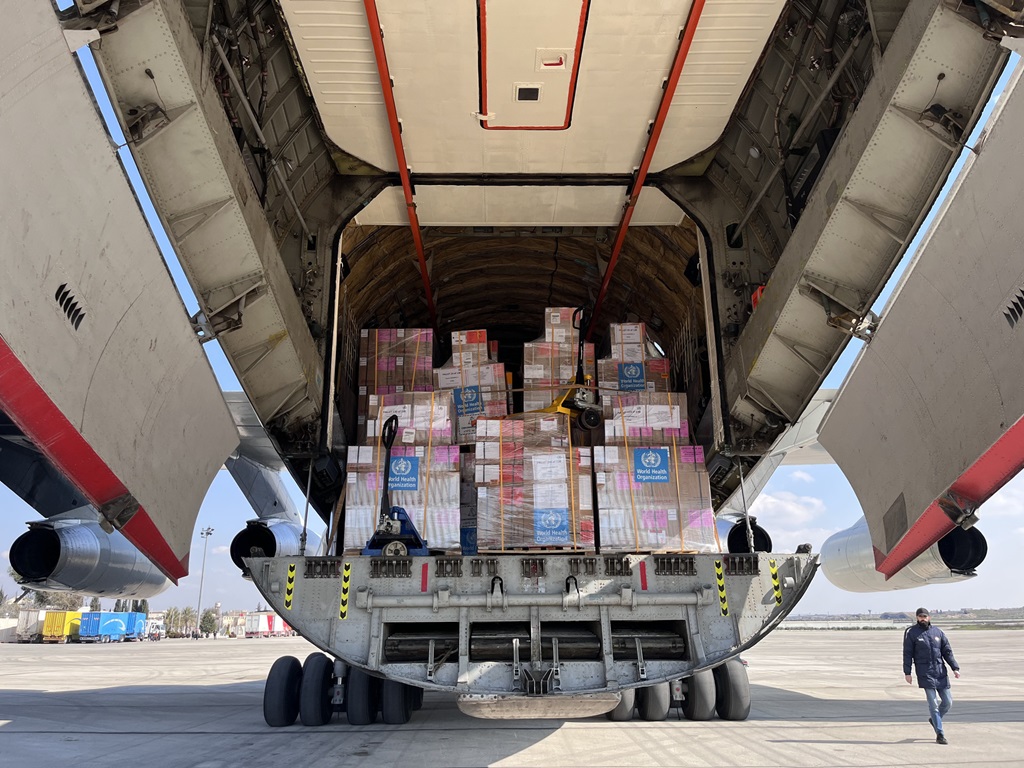
WHO has delivered 72 metric tons of trauma and emergency surgery supplies, including medicines, to support response efforts. Aleppo, Syrian Arab Republic. Credit: WHO / Inas Haman.
2. In Türkiye, a total of 38 national and international EMTs from more than 25 countries, have carried out close to 100 000 medical consultations. This represents the largest deployment of EMTs to a disaster zone in the WHO European Region in its 75-year history, with teams integrated into the ongoing health response to provide critical emergency care, surgeries, rehabilitation and access to primary-care services, while strengthening national capacities for preparedness and response.
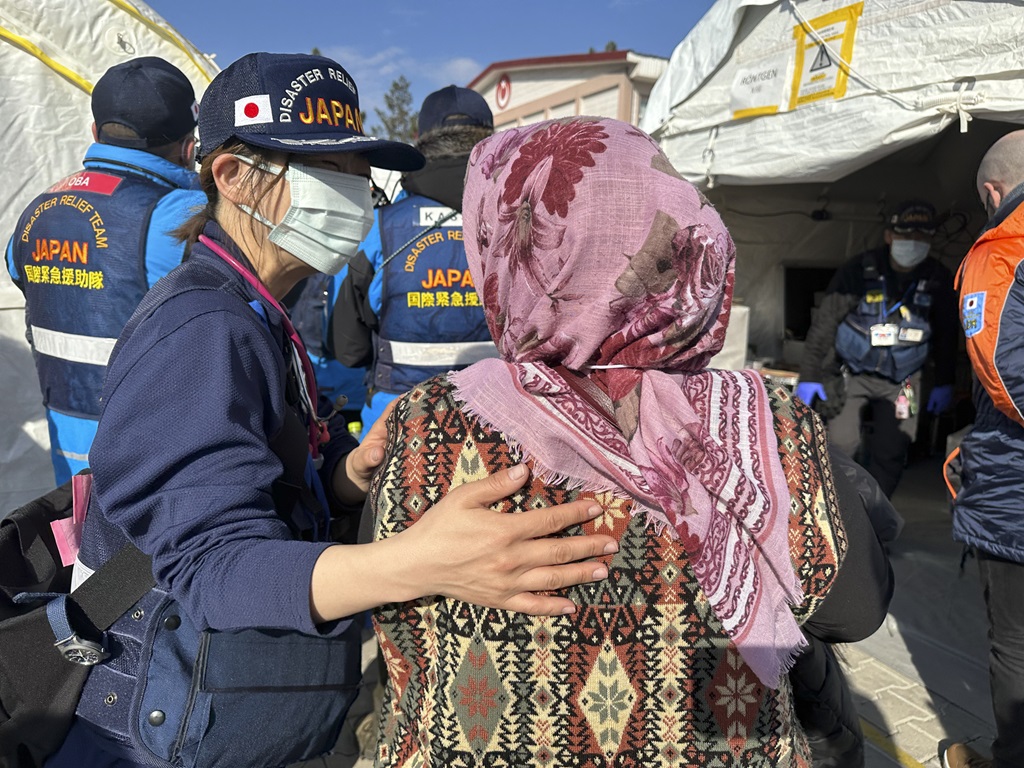
A Japanese Emergency Medical Team deployed to Türkiye to provide health services to people affected by the earthquake. Credit: WHO / Nyka Alexander
3. In north-west Syria, over 40 000 people displaced after the earthquakes are still living in reception centres as risk of flooding and a decrease in temperatures increase their vulnerabilities. WHO continues to support disease surveillance and outbreak response, through mobile health teams and clinics. Some 950 000 people were reached through household visits and awareness sessions targeting mental health, cholera and communicable disease in the aftermath of the earthquake.
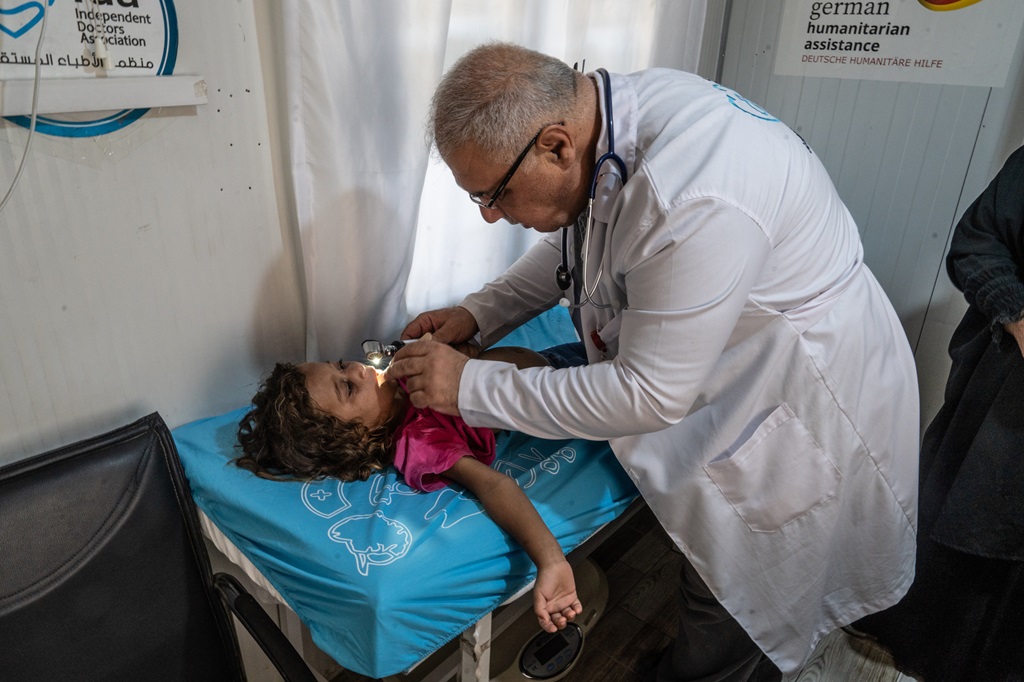
At the Shamarekh Primary Health Center in Azzaz, Abdel Ghani Shehab El Deebo, a nurse from the Independent Doctors Association (IDA) examines 5-year-old Alaa who resides at the nearby IDP camp with her family. Credit: WHO / Giles Clarke
4. In Syria, a third of the people injured in the earthquakes were under the age of 15. Pre-earthquake, about one in four people in Syria were living with a disability, compared to one in seven globally. In the months following the earthquake, total of 23 000 patients received rehabilitation consultations by health partners in north-west Syria. WHO supported 5 rehabilitation centres for inpatient rehabilitation services where each patient received intensive physiotherapy sessions alongside psychosocial support. WHO continues to support affected health facilities with rehabilitation supplies and services, as well as numerous equipment and devices, including radiology equipment, such as CT-scanners, MRI and X-ray machines. In total, nearly 470,000 people received outpatient consultations, and over 1 million mental consultations in Syria.

Nour (21) and his brother Ayman (12) at the Alhedaya Physiotherapy Centre in Dana-subdistrict in Idlib. The brothers were both injured on 6 February 2023, when a magnitude 7.8 earthquake struck north-west Syria. Credit: WHO / Khalil Ashawi
5. In addition to the visible scars of the earthquakes, there are also invisible ones. People lost family members, friends, their houses and livelihoods. First responders, who tried to rescue their communities, even when there was no hope left, were heavily affected. Very early on, health workers started to detect symptoms of mental trauma in patients, such as shaking and fatigue, disorientation, tendency to burst into tears, fits of rage and also changes in sleep and appetite. This is why WHO immediately supported the mental health response in both countries, and continues to do so, through deployment of mental health experts, training of health workers and delivery of mental health and psychosocial services. WHO estimates that nearly 1 million people in north-west Syria or 20% of the overall population, suffer from a mental health disorder, while 230 000 people are estimated to suffer from severe mental health disorders. As part of WHO’s response to the earthquakes, mental health services were expanded at 75 hospitals, 51 reception centres and 84 camps, reaching a total of 170 000 people with psychological first aid. At the same time, WHO Country Office in Syria also deployed more than 125 mobile outreach teams providing mental health services to affected persons in communities, in shelters and in schools. Overall, in Syria, WHO aided the scaling up of support to women, children and families experiencing gender-based violence and sexual exploitation and abuse. Women facing difficulties such as displacement, and domestic violence were supported and empowered to break the shame and stigma around disclosures.
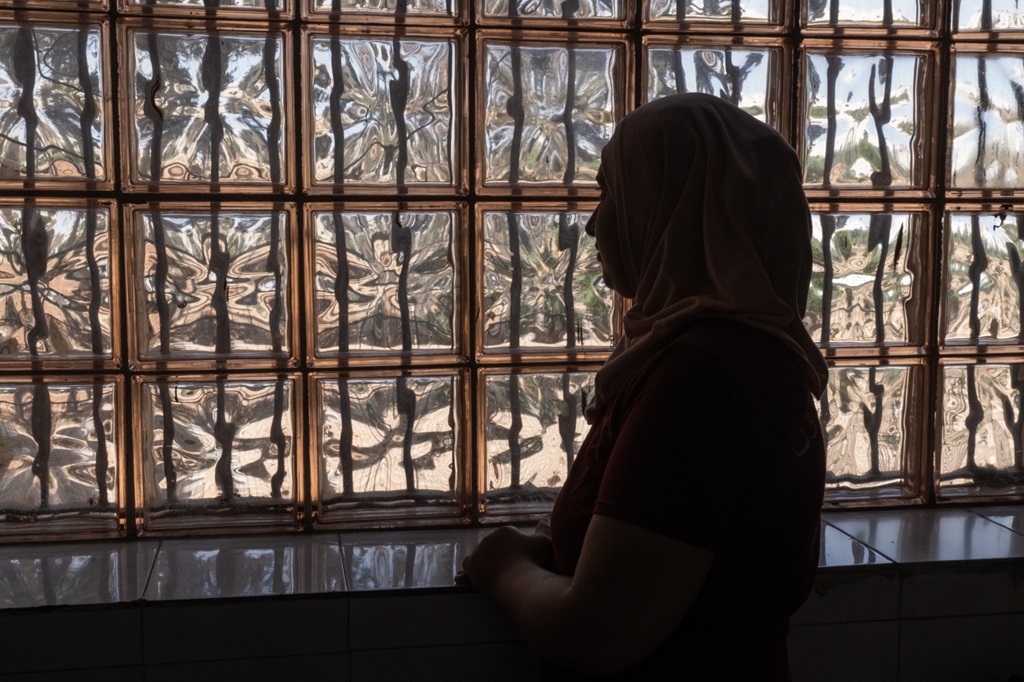
Hanan is a female patient at the WHO-supported Ibn Khaldoon Mental Health Hospital in rural Aleppo with severe post-traumatic stress disorder. Credit: WHO / Giles Clarke
6. The Government of Türkiye has provided accommodation to millions of people displaced by the earthquakes. These include mothers who face limited access to water and sanitation services. WHO supported the Ministry of Health to restore provision of health services at the primary health care level by providing prefabricated family health centers and containers for mental health and psychosocial support and physical rehabilitation services.
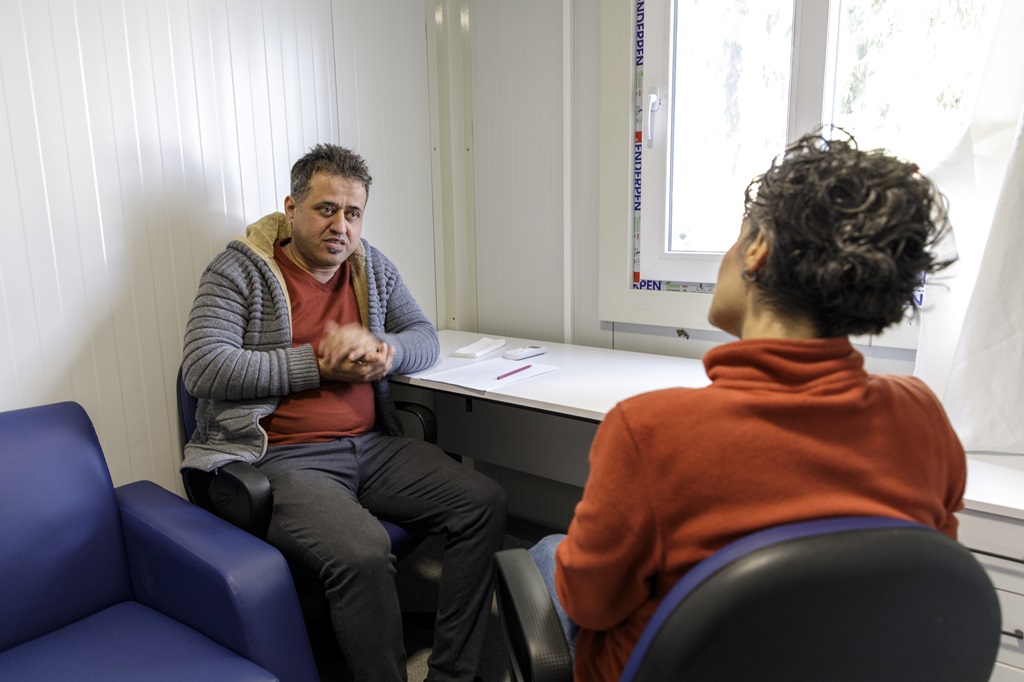
Psychologist İlhan Özçellik offering vital psychosocial support to a woman residing in Samandağ, Hatay, overcoming post-traumatic stress challenges one year after the earthquakes. Credit: WHO / Tunc Ozceber
